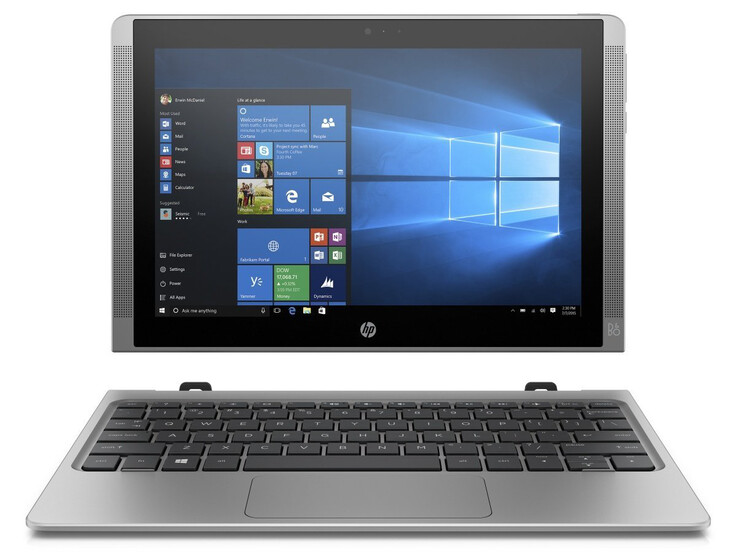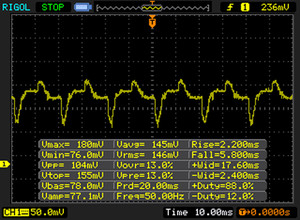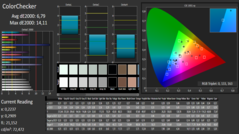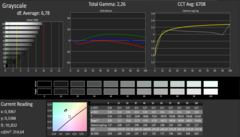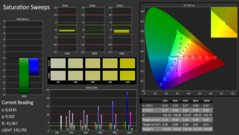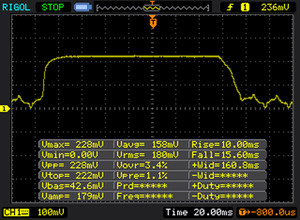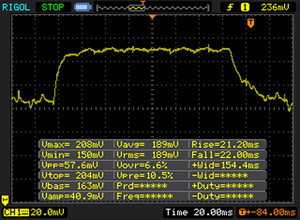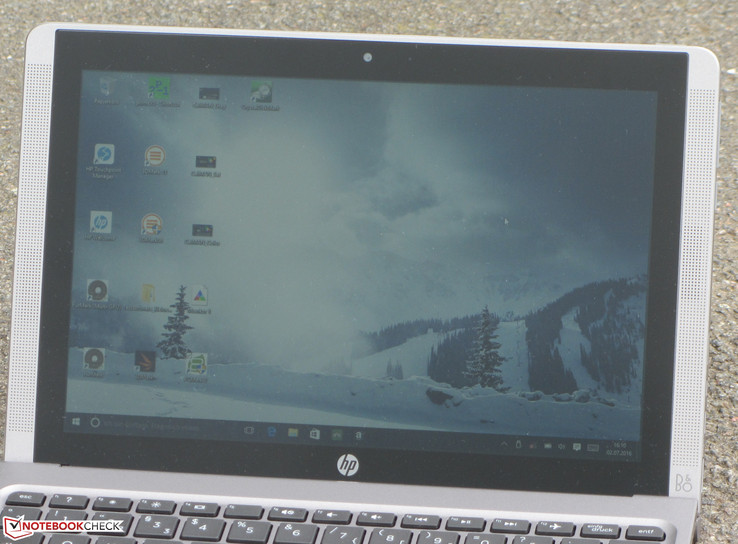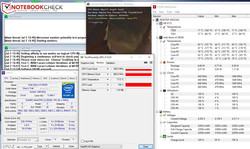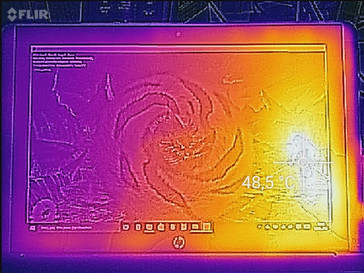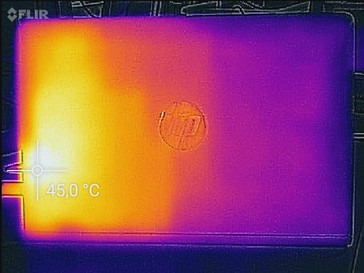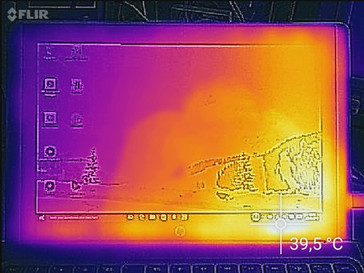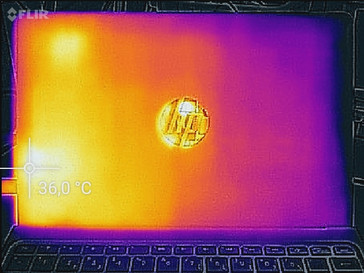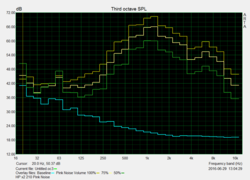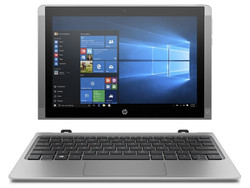HP x2 210 G1 Convertible Review

For the original German review, see here.
The HP x2 210 G1 is a 10.1-inch Windows convertible. We have previously tested its sister model Pavilion x2 10, which has the same build and uses a Bay Trail CPU. Our test model uses an Atom processor of the Cherry Trail generation. The competition for our test model includes the Lenovo IdeaPad Miix 300-10IBY, the Acer Aspire Switch 10V and the Toshiba Satellite Click 10.
As the HP x2 210 G1 and the Pavilion x2 10 have the same build, we will not repeat the details of the case, the connectivity, the input devices and the speakers. This information can be found in the review of the Pavilion x2 10.
Case & Connectivity
The test model has not changed much from the Pavilion x2 10. HP uses a silver-grey case for the x2 210. On the inside, the laptop runs a Cherry Trail processor. The case trades the Type-A USB 2.0 port of the sister model in favor of a USB 3.0 port. Both models have a Type-C USB port which works with the USB 2.0 standard. It also serves as the connector for the power adapter.
| SD Card Reader | |
| maximum SDCardreader Maximum Transfer Rate | |
| average SDCardreader Average Transfer Rate |
| Networking | |
| iperf Server (receive) TCP 1 m | |
| HP x2 210 G1 | |
| iperf Client (transmit) TCP 1 m | |
| HP x2 210 G1 | |
Display
HP has given the x2 210 G1 a 10.1-inch touchscreen display. It offers a native resolution of 1280x800 pixels. The brightness (294.6 cd/m²) and the contrast (1490:1) are good. We would have liked to see higher brightness as this device is designed for use in various scenarios, including outdoor use, and thus should be bright enough for the user to read the screen comfortably. Unfortunately, with brightness levels of below 60%, the device suffers from PWM (Pulse Width Modulation) flickers at a frequency of 50 Hertz, which can cause headaches for users with eye problems.
| |||||||||||||||||||||||||
Brightness Distribution: 84 %
Center on Battery: 256 cd/m²
Contrast: 1490:1 (Black: 0.21 cd/m²)
ΔE ColorChecker Calman: 6.79 | ∀{0.5-29.43 Ø4.78}
ΔE Greyscale Calman: 6.78 | ∀{0.09-98 Ø5}
63% sRGB (Argyll 1.6.3 3D)
41% AdobeRGB 1998 (Argyll 1.6.3 3D)
44.22% AdobeRGB 1998 (Argyll 3D)
63.7% sRGB (Argyll 3D)
42.77% Display P3 (Argyll 3D)
Gamma: 2.26
CCT: 6708 K
| HP x2 210 G1 IPS, 1280x800 | HP Pavilion x2 10-n013dx IPS, 1280x800 | Lenovo IdeaPad Miix 300-10IBY IPS, 1280x800 | Acer Aspire Switch 10V SW5-014-1742 IPS, 1920x1200 | Toshiba Satellite Click 10 LX0W-C-104 IPS, 1920x1200 | Microsoft Surface 3 IPS, 1920x1280 | Dell Venue 10 Pro 5056 IPS, 1920x1200 | |
|---|---|---|---|---|---|---|---|
| Display | 0% | 21% | 6% | -1% | 58% | -6% | |
| Display P3 Coverage (%) | 42.77 | 42.71 0% | 51.8 21% | 45.37 6% | 42.25 -1% | 68.8 61% | 40.38 -6% |
| sRGB Coverage (%) | 63.7 | 64.1 1% | 77 21% | 67.5 6% | 63.5 0% | 98.7 55% | 60.7 -5% |
| AdobeRGB 1998 Coverage (%) | 44.22 | 44.13 0% | 53.5 21% | 46.88 6% | 43.67 -1% | 70.4 59% | 41.72 -6% |
| Response Times | 1% | 11% | -235% | 13% | |||
| Response Time Grey 50% / Grey 80% * (ms) | 43 ? | 30 ? 30% | 37 ? 14% | 92 ? -114% | 30 ? 30% | ||
| Response Time Black / White * (ms) | 25 ? | 32 ? -28% | 23 ? 8% | 114 ? -356% | 26 ? -4% | ||
| PWM Frequency (Hz) | 50 ? | 50 ? | 877 ? | ||||
| Screen | -7% | -8% | 11% | -8% | 21% | 3% | |
| Brightness middle (cd/m²) | 313 | 316.1 1% | 234 -25% | 451 44% | 308 -2% | 399 27% | 365 17% |
| Brightness (cd/m²) | 295 | 294 0% | 227 -23% | 440 49% | 288 -2% | 380 29% | 348 18% |
| Brightness Distribution (%) | 84 | 85 1% | 93 11% | 85 1% | 87 4% | 90 7% | 91 8% |
| Black Level * (cd/m²) | 0.21 | 0.327 -56% | 0.19 10% | 0.48 -129% | 0.43 -105% | 0.49 -133% | 0.24 -14% |
| Contrast (:1) | 1490 | 967 -35% | 1232 -17% | 940 -37% | 716 -52% | 814 -45% | 1521 2% |
| Colorchecker dE 2000 * | 6.79 | 6.18 9% | 8.65 -27% | 3.03 55% | 4.68 31% | 1.66 76% | 8.31 -22% |
| Colorchecker dE 2000 max. * | 14.11 | 14.35 -2% | 6.45 54% | 3.24 77% | 16.47 -17% | ||
| Greyscale dE 2000 * | 6.78 | 5.51 19% | 9.86 -45% | 1.74 74% | 3.4 50% | 2.75 59% | 3.39 50% |
| Gamma | 2.26 97% | 2.01 109% | 2.87 77% | 2.37 93% | 2.72 81% | 2.22 99% | 1.96 112% |
| CCT | 6708 97% | 6510 100% | 9884 66% | 6568 99% | 6803 96% | 6358 102% | 6451 101% |
| Color Space (Percent of AdobeRGB 1998) (%) | 41 | 40 -2% | 49 20% | 43 5% | 40 -2% | 64.4 57% | 38 -7% |
| Color Space (Percent of sRGB) (%) | 63 | 64 2% | 77 22% | 59 -6% | 64 2% | 98.8 57% | 60 -5% |
| Total Average (Program / Settings) | -4% /
-5% | 5% /
-1% | 9% /
10% | -81% /
-39% | 40% /
30% | 3% /
3% |
* ... smaller is better
Screen Flickering / PWM (Pulse-Width Modulation)
| Screen flickering / PWM detected | 50 Hz | ≤ 60 % brightness setting | |
The display backlight flickers at 50 Hz (worst case, e.g., utilizing PWM) Flickering detected at a brightness setting of 60 % and below. There should be no flickering or PWM above this brightness setting. The frequency of 50 Hz is very low, so the flickering may cause eyestrain and headaches after extended use. In comparison: 53 % of all tested devices do not use PWM to dim the display. If PWM was detected, an average of 8111 (minimum: 5 - maximum: 343500) Hz was measured. | |||
Display Response Times
| ↔ Response Time Black to White | ||
|---|---|---|
| 25 ms ... rise ↗ and fall ↘ combined | ↗ 10 ms rise | |
| ↘ 15 ms fall | ||
| The screen shows relatively slow response rates in our tests and may be too slow for gamers. In comparison, all tested devices range from 0.1 (minimum) to 240 (maximum) ms. » 58 % of all devices are better. This means that the measured response time is worse than the average of all tested devices (20.2 ms). | ||
| ↔ Response Time 50% Grey to 80% Grey | ||
| 43 ms ... rise ↗ and fall ↘ combined | ↗ 21 ms rise | |
| ↘ 22 ms fall | ||
| The screen shows slow response rates in our tests and will be unsatisfactory for gamers. In comparison, all tested devices range from 0.165 (minimum) to 636 (maximum) ms. » 70 % of all devices are better. This means that the measured response time is worse than the average of all tested devices (31.6 ms). | ||
Performance
HP delivers a 10.1-inch convertible which is suitable for simple office and Internet use. Our test model is priced at 400 Euros (~$445) and various configurations of this model are available online. The possible options are expanded further by the Pavilion x2 10 series, which has a similar build.
Processor
The HP x2 210 G1 runs on an Intel Atom x5 Z8300 (Cherry Trail) quad-core CPU. The performance is enough for simple office and Internet use. The low TDP value (smaller than 4 W) allows the SoC to be passively cooled. The CPU runs at a base clock speed of 1.44 GHz. Turbo allows the speed to be boosted up to 1.84 GHz. In the Multithread tests, the CPU performed at 1.6 GHz and in the single thread tests the processor runs at speeds between 1.4 and 1.84 GHz. The CPU performs exactly the same when using battery.
| JetStream 1.1 - Total Score | |
| Dell Venue 10 Pro 5056 | |
| HP x2 210 G1 | |
| Toshiba Satellite Click 10 LX0W-C-104 | |
| Lenovo IdeaPad Miix 300-10IBY | |
| Acer Aspire Switch 10V SW5-014-1742 | |
System Performance
The system runs smoothly and we did not encounter any issues. PC Mark benchmarks confirm our assessment of the SoC performance. It is not possible to increase the overall performance.
| PCMark 8 Home Score Accelerated v2 | 1391 points | |
Help | ||
| PCMark 8 - Home Score Accelerated v2 (sort by value) | |
| HP x2 210 G1 | |
| Lenovo IdeaPad Miix 300-10IBY | |
| Toshiba Satellite Click 10 LX0W-C-104 | |
| Microsoft Surface 3 | |
| Dell Venue 10 Pro 5056 | |
Storage Device
The storage device is an eMMC module with a capacity of 64 GB. Owners will have around 43 GB available for use. The transfer rates of the storage device are quite normal for eMMC memory and the total storage space available can be increased with a MicroSD card.
| HP x2 210 G1 HD Graphics (Cherry Trail), Z8300, 64 GB eMMC Flash | HP Pavilion x2 10-n013dx HD Graphics (Bay Trail), Z3736F | Lenovo IdeaPad Miix 300-10IBY HD Graphics (Bay Trail), Z3735F, 64 GB eMMC Flash | Acer Aspire Switch 10V SW5-014-1742 HD Graphics (Cherry Trail), Z8300, Seagate Momentus Thin ST500LT012-1DG142 | Toshiba Satellite Click 10 LX0W-C-104 HD Graphics (Cherry Trail), Z8300, 32 GB eMMC Flash | Microsoft Surface 3 HD Graphics (Cherry Trail), Z8700, 128 GB eMMC Flash | Dell Venue 10 Pro 5056 HD Graphics (Cherry Trail), Z8500, 128 GB eMMC Flash | |
|---|---|---|---|---|---|---|---|
| CrystalDiskMark 3.0 | 1% | 2% | 17% | -15% | -10% | -23% | |
| Read Seq (MB/s) | 134.1 | 120.5 -10% | 118.7 -11% | 167 25% | 128.6 -4% | 149.3 11% | 100.4 -25% |
| Write Seq (MB/s) | 66.1 | 64.1 -3% | 56.2 -15% | 94.9 44% | 43.99 -33% | 47.99 -27% | 58.7 -11% |
| Read 512 (MB/s) | 112.9 | 107.5 -5% | 109.3 -3% | 149.9 33% | 97.3 -14% | 133.7 18% | 78.3 -31% |
| Write 512 (MB/s) | 57.7 | 67.2 16% | 53.4 -7% | 26.35 -54% | 30.47 -47% | 39.9 -31% | 42.62 -26% |
| Read 4k (MB/s) | 15.79 | 15.2 -4% | 14.73 -7% | 17.26 9% | 13.25 -16% | 12.64 -20% | 7.312 -54% |
| Write 4k (MB/s) | 10.06 | 10.69 6% | 12.1 20% | 13.85 38% | 11.54 15% | 9.52 -5% | 8.278 -18% |
| Read 4k QD32 (MB/s) | 35.31 | 34.34 -3% | 47.77 35% | 33.39 -5% | 20.93 -41% | 27.94 -21% | 28.2 -20% |
| Write 4k QD32 (MB/s) | 11.84 | 12.85 9% | 12.06 2% | 17.38 47% | 14.46 22% | 11.2 -5% | 12.24 3% |
Graphics Card
The laptop has a Cherry Trail Intel HD Graphics IGP on-board. It supports DirectX 12 and operates at speeds of up to 500 MHz. The results of the 3D Mark benchmarks show that the IGP performs at a decent level. In comparison to the Bay Trail predecessors, the performance has increased significantly due to the improved architecture of the Cherry Trail IGPs.
| 3DMark 11 Performance | 333 points | |
| 3DMark Ice Storm Standard Score | 18452 points | |
| 3DMark Fire Strike Score | 1059 points | |
Help | ||
Gaming Performance
The hardware is strong enough to run casual games, such as the ones found in the Windows Store. Modern games, such as “Doom” or “Hitman”, will not run on the convertible.
| low | med. | high | ultra | |
|---|---|---|---|---|
| Trackmania Nations Forever (2008) | 99.7 | 24.4 |
Emissions & Energy
Temperatures
Whether on battery or plugged in, the convertible performed at the same levels during the stress test. For this test, Prime95 and FurMark run simultaneously for at least an hour. At the start of the test, the CPU and GPU operate at 1.4 GHz and 400 MHz respectively. As the test goes on, the speeds drop slowly. After about an hour, the speeds fall to 600 - 700 MHz (CPU) and 300 MHz (GPU). Thankfully, the device does not get too hot during the stress test: only two measurement points crossed the 40 degrees Celsius (~104 degrees Fahrenheit) mark.
(±) The maximum temperature on the upper side is 43.6 °C / 110 F, compared to the average of 35.4 °C / 96 F, ranging from 19.6 to 60 °C for the class Convertible.
(+) The bottom heats up to a maximum of 39.4 °C / 103 F, compared to the average of 36.8 °C / 98 F
(+) In idle usage, the average temperature for the upper side is 27.3 °C / 81 F, compared to the device average of 30.3 °C / 87 F.
(-) The palmrests and touchpad can get very hot to the touch with a maximum of 43.6 °C / 110.5 F.
(-) The average temperature of the palmrest area of similar devices was 27.9 °C / 82.2 F (-15.7 °C / -28.3 F).
Speakers
Power Consumption
While idling, the convertible requires too much power: a maximum idle consumption of 9.3 W. During the stress test, the consumption rises to 12.8 W. The power adapter offers 16 W.
| Off / Standby | |
| Idle | |
| Load |
|
Key:
min: | |
Battery Life
In the practical WLAN test, we test the run time of the device while we load various websites. The power profile is set to "Balanced" and the power saving features are turned off. The brightness is set to about 150 cd/m². The x2 210 G1 reaches a run time of 9:10 h - very good. The test model lasts 90 minutes longer than its Bay Trail sister model.
Pros
Cons
Verdict
HP delivers a 10.1-inch Windows convertible. The x2 210 G1 offers sufficient performance for internet and office use thanks to its Intel Atom SoC. The device operates silently and barely heats up. It offers a lot of storage space (64 GB) and the keyboard is decent. However, users will need a bit of time to get used to the size of the keys. Big hands will find this keyboard a little awkward to use. The IPS screen is bright, especially when the convertible is plugged in. During battery use, the brightness levels drop. The battery life is very good, but the manufacturer offers only 1 year of warranty.
The HP x2 210 G1 is a well-rounded Windows convertible.
The device costs about 400 Euros (~$445). Simple 11.6 netbooks are available for far less money and will be more useful as portable, typing devices. However, if you are interested in the HP convertible, you should also take a look at the Pavilion x2 10 series, which has the same build. The latter has models available for prices around 300 Euros (~$333). However, the buyer will have to live with around 2 GB of RAM and 32 GB eMMC storage space.
HP x2 210 G1
- 07/07/2016 v5.1 (old)
Sascha Mölck




